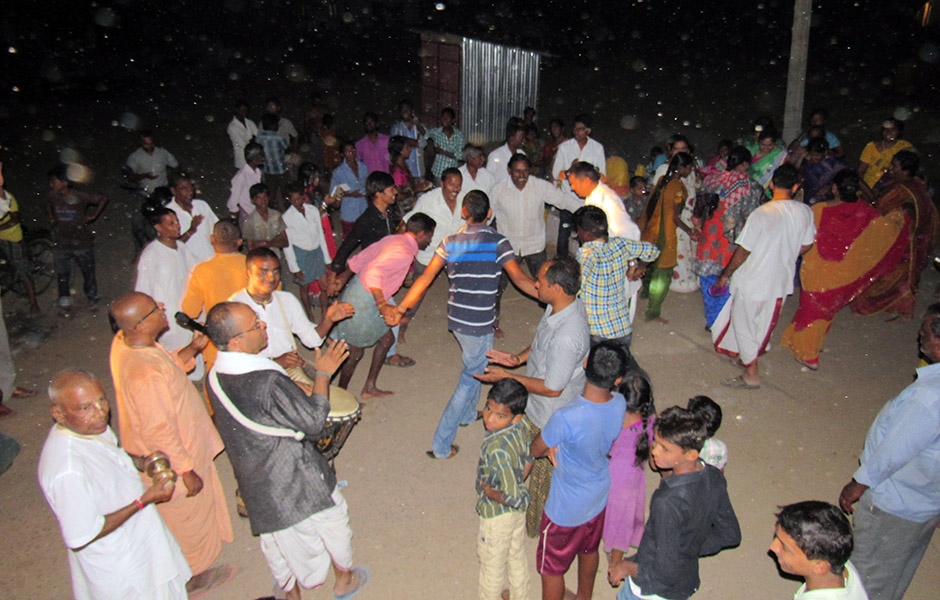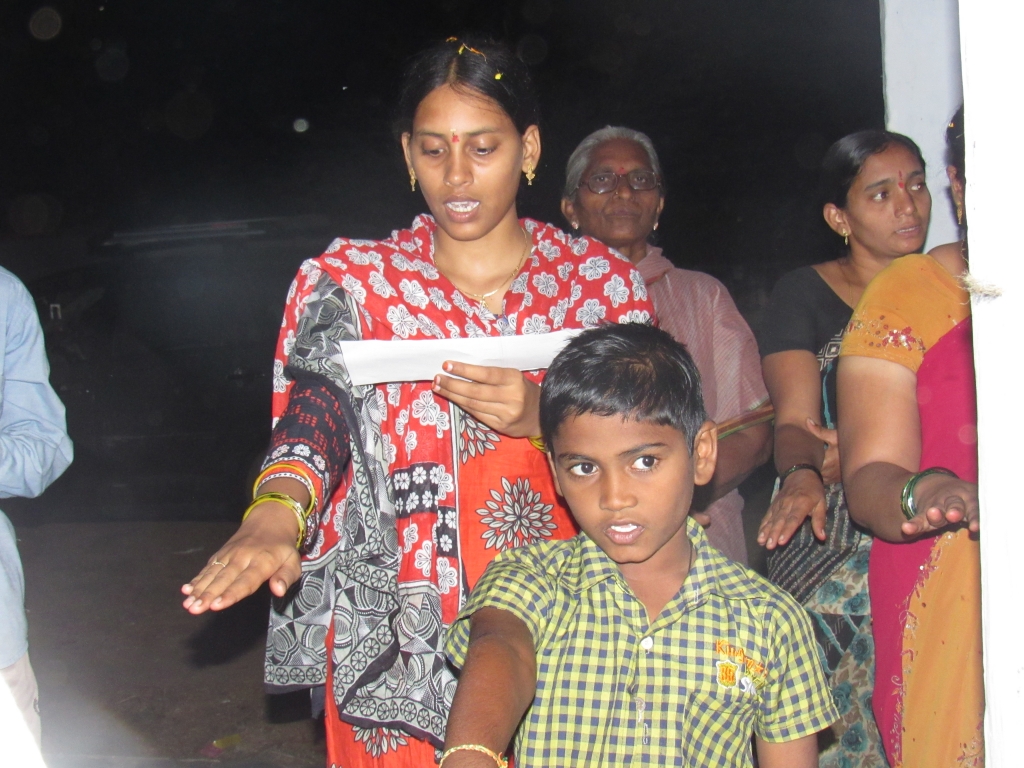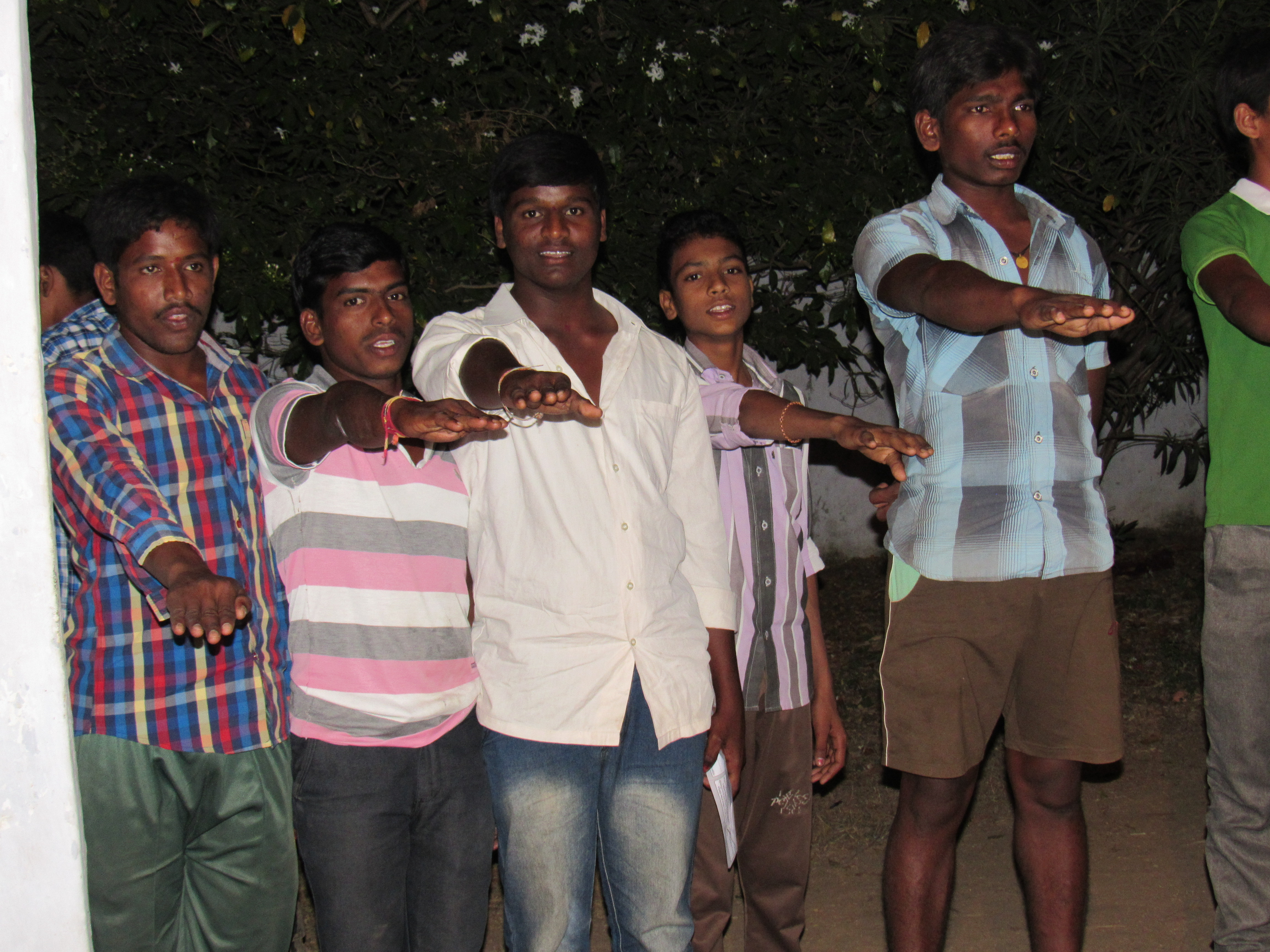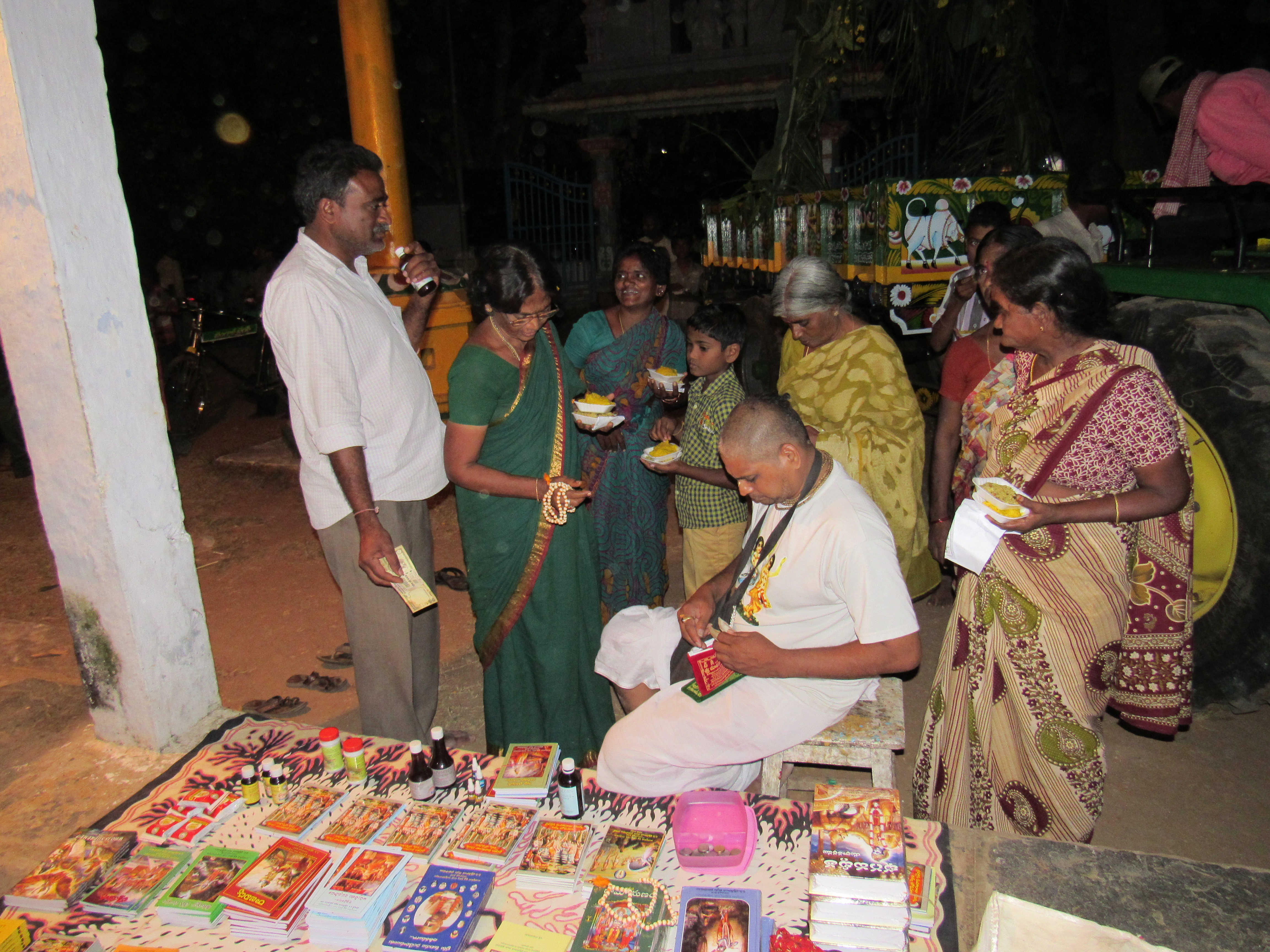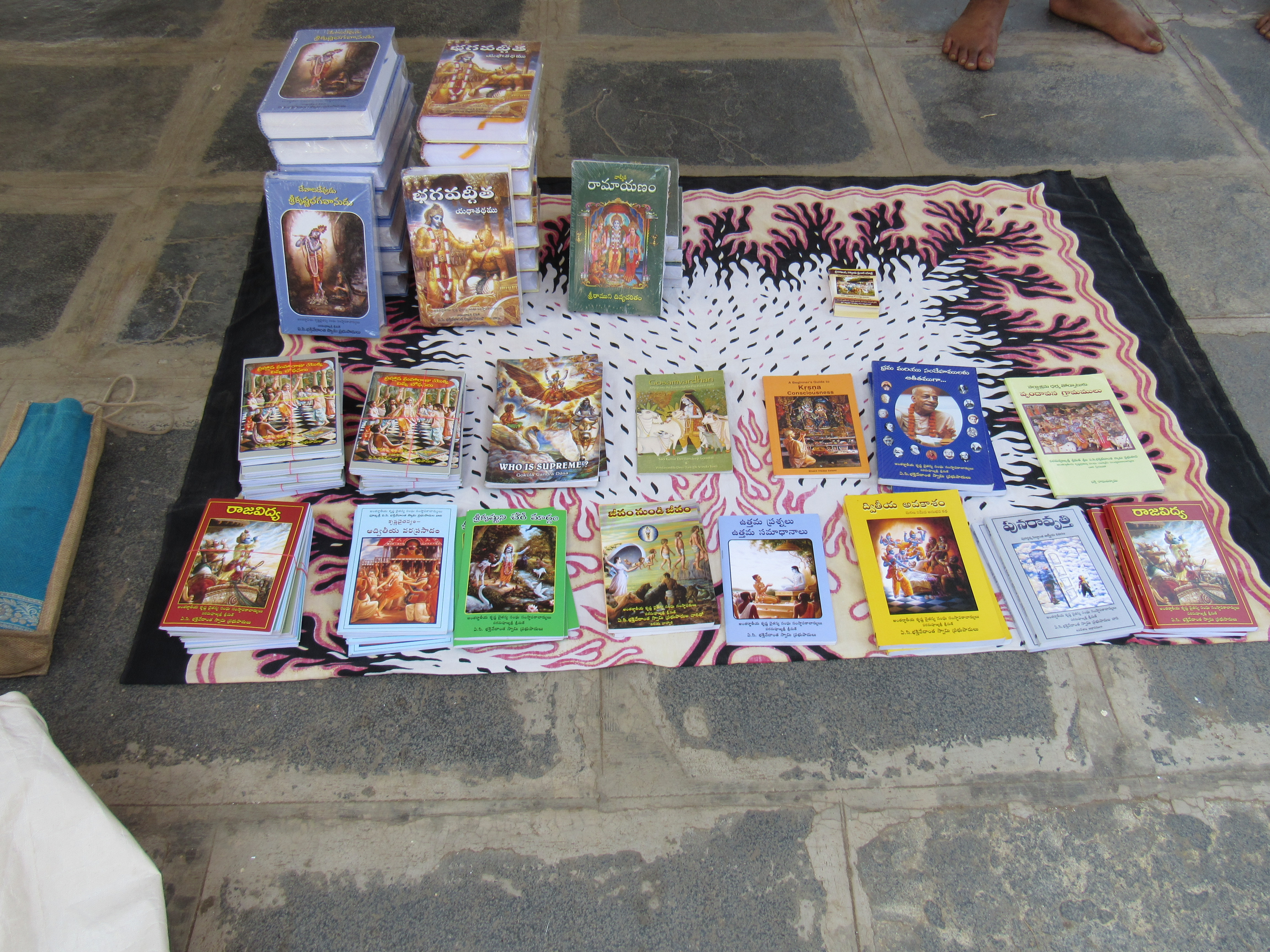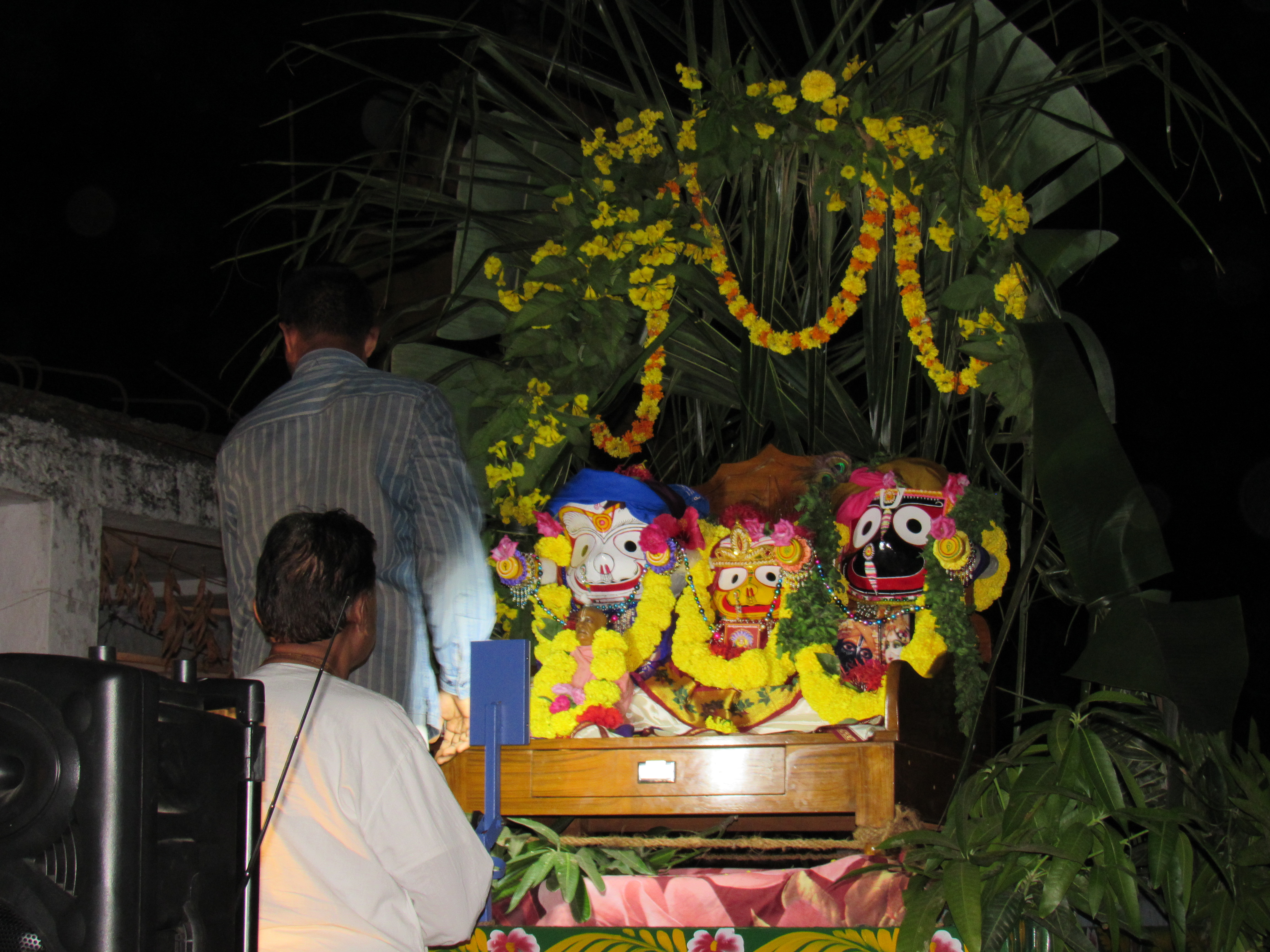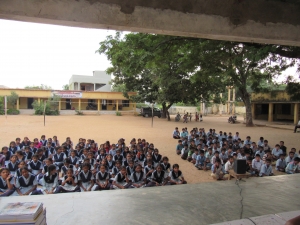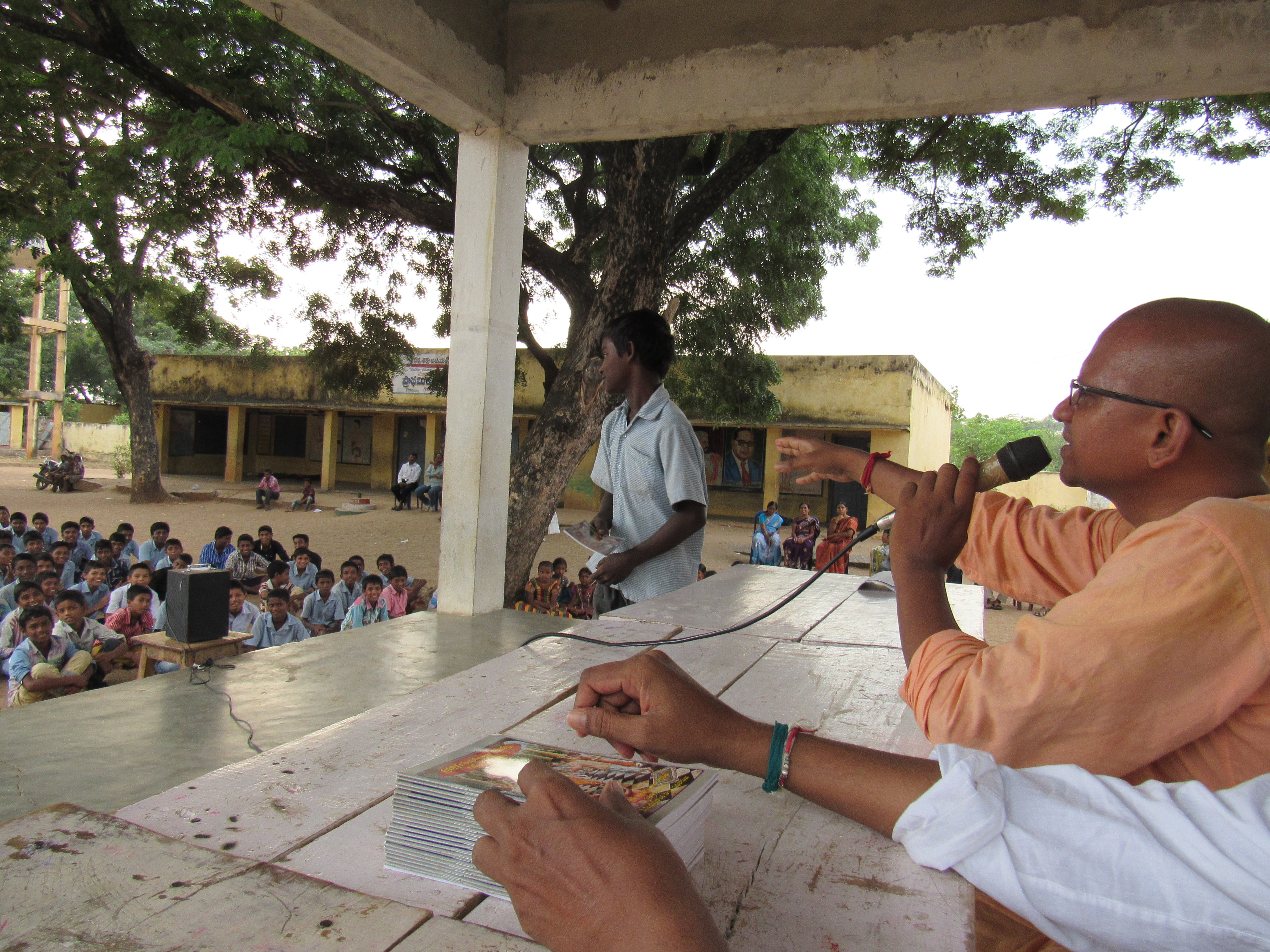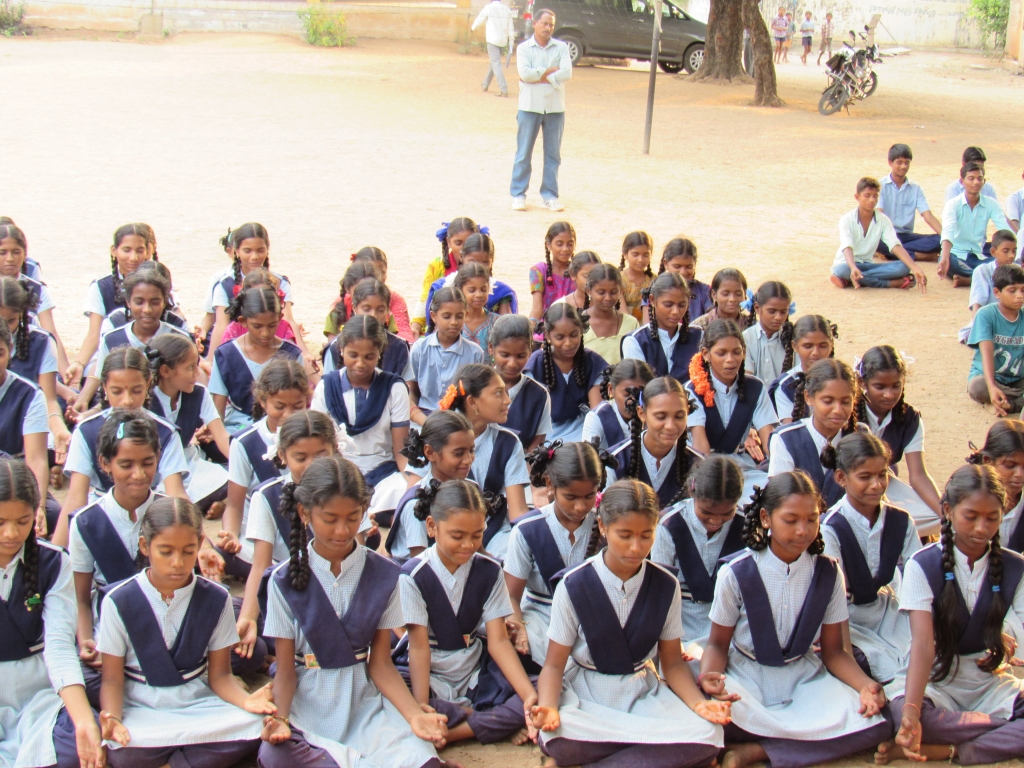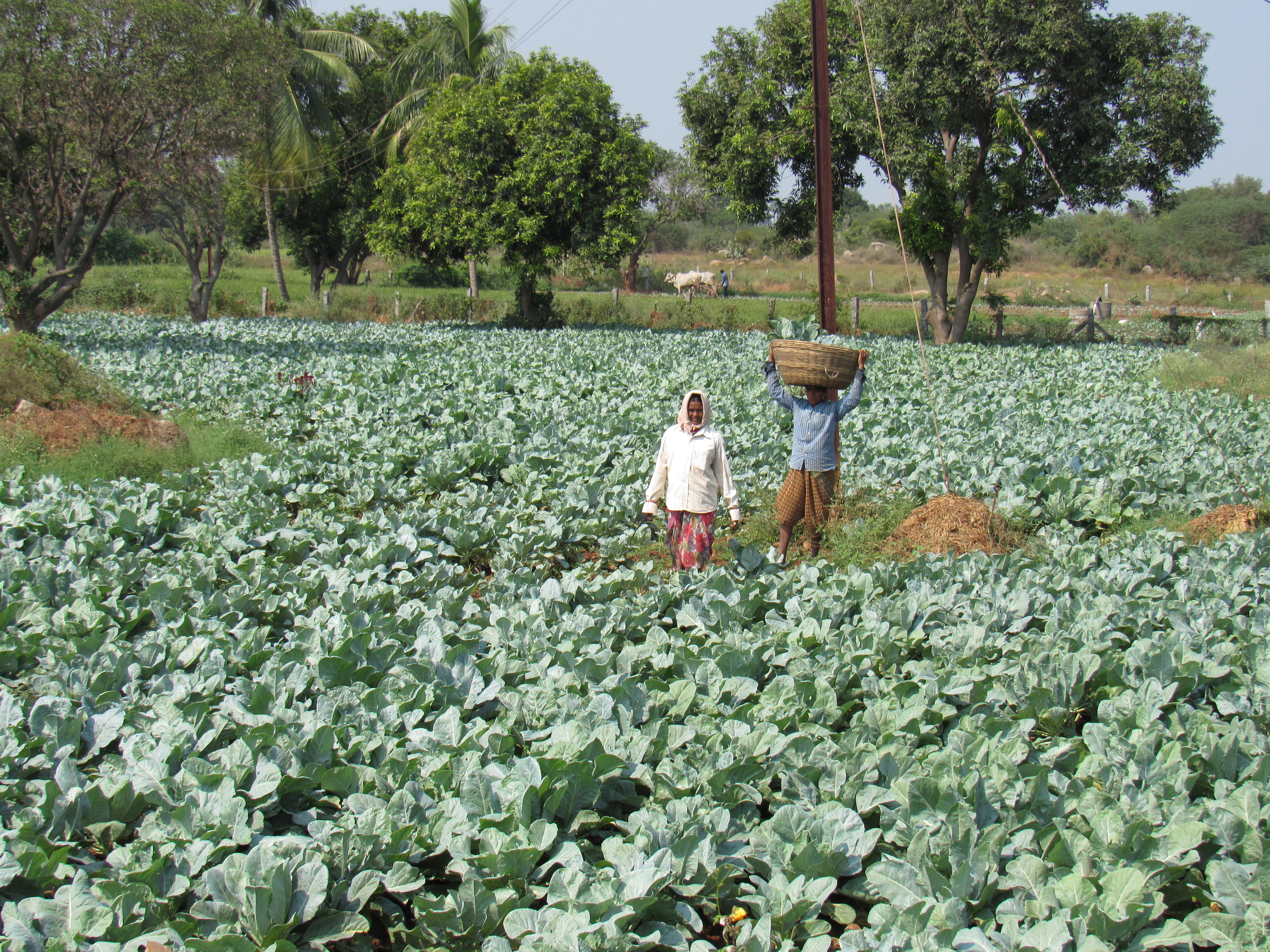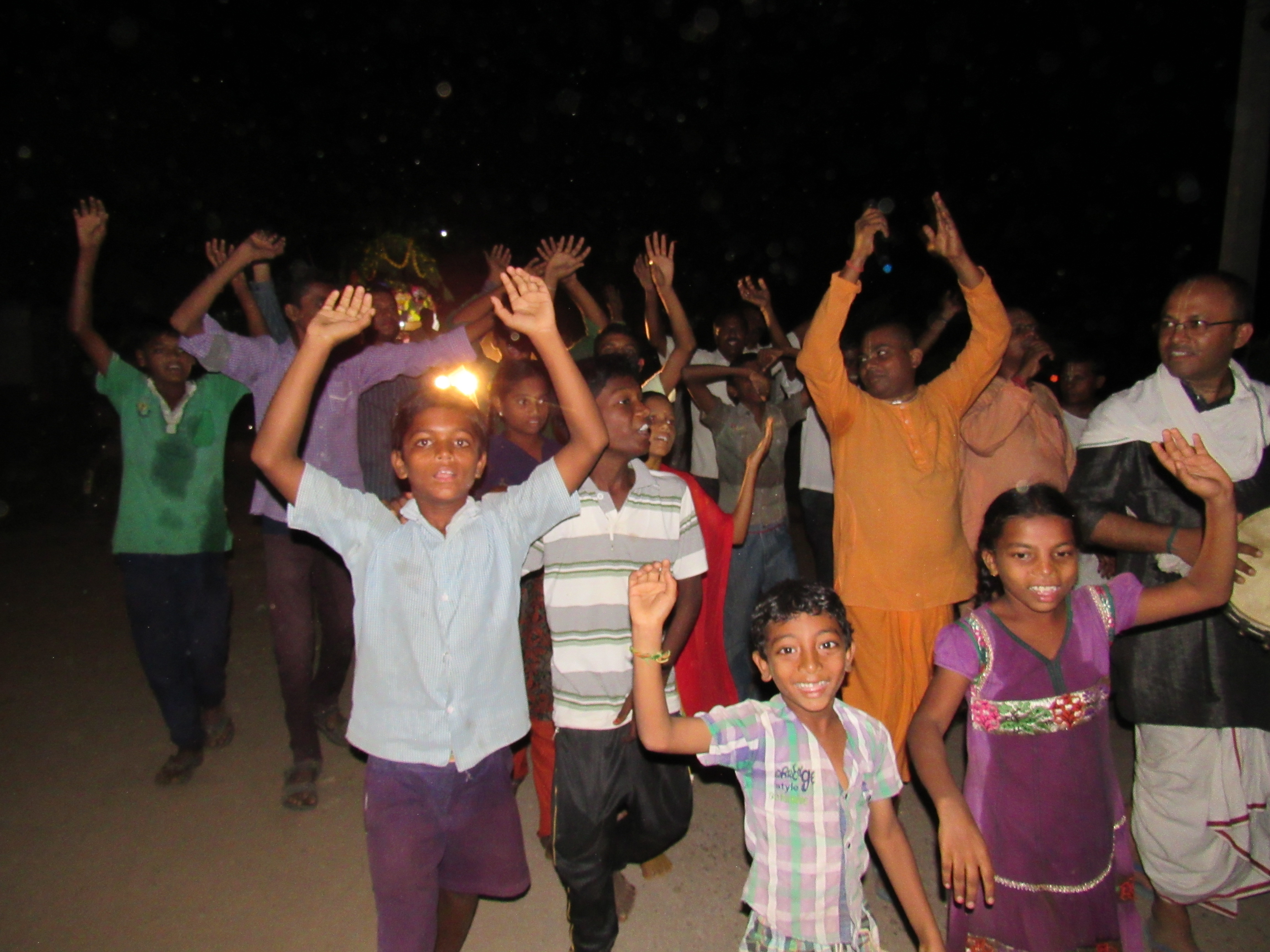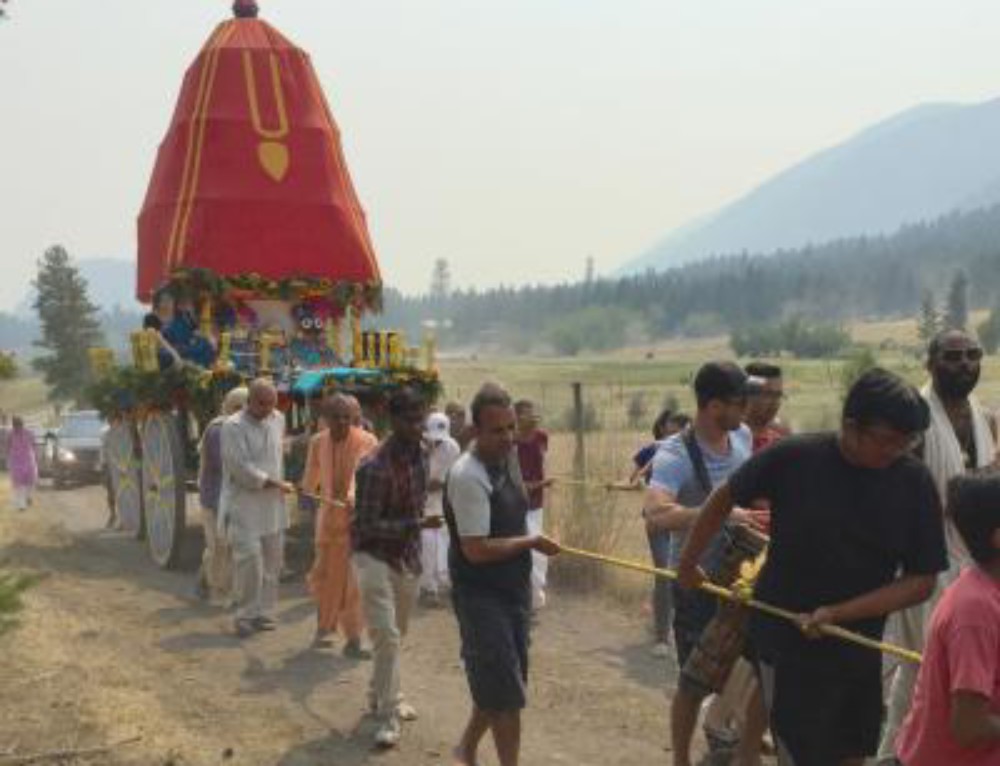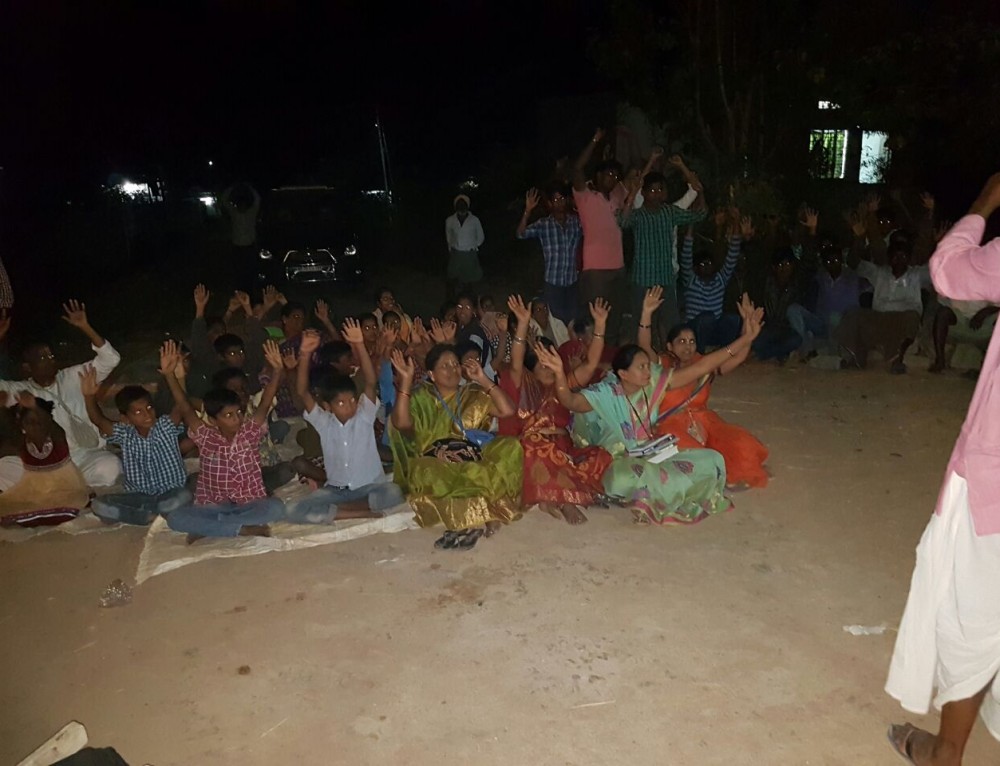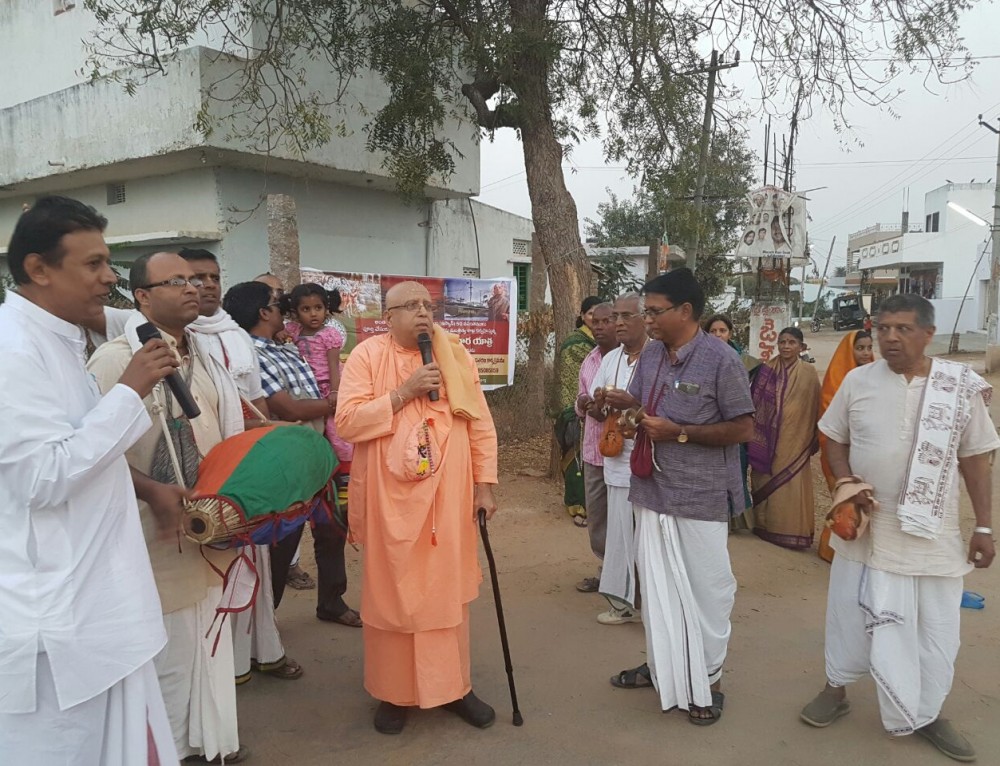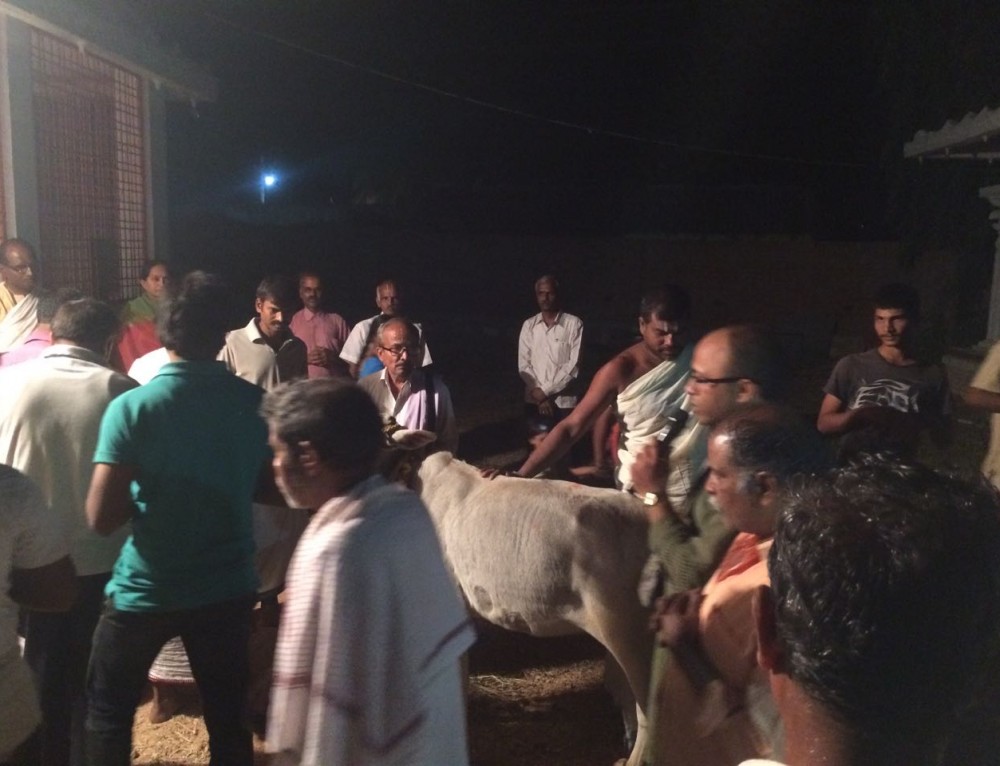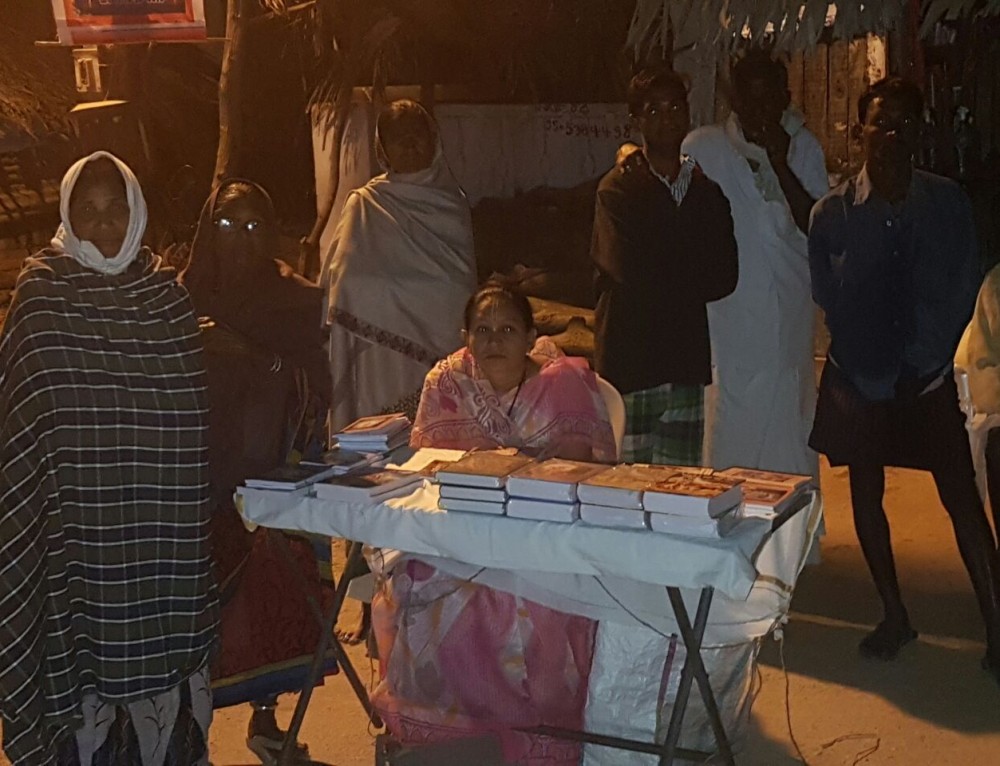The figure of thirteen is always viewed with apprehension and fear. There are many buildings which do not have thirteenth storey, many hotels which do not have 13 Room number, even vehicle owners are scared to accept this number considering it unlucky.
For the Sri Govind Gau Gram Prachar Yatra devotees, it was their thirteenth day. From past twelve days they had been on wheels and the yatra was still on. What would the thirteenth village hold in store for them?
The Yatra devotees’ bus stopped in front of the Chenna Keshava temple of Gudibanda village – their thirteenth village. The village derived its name from two words – Gudi (which means temple in Telugu) andvanda (which means settlement). The temple of Chenna Keshava – where the Lord Vishnu was in a warrior form, defined the axle of Gudibanda, thus the name.
The primary occupation of the villagers was farming. Its irrigation needs were met by one canal which had now totally dried up. There had also been no rain in the season. The twin disasters had spelt doom for many farmers in the village. The devotees also noticed that the farmers had opted for cash and mono cropping instead of the traditional method of crop rotation and multi-cropping. The farmers had innocently invited their own destruction by this move. Traditional technology or even farming methods, the whole approach rests on respecting everything around us as His property. One therefore does not exploit bhumidevi and tries to lord over it for just his own pleasure without bothering for others and future (kala or time). When both kala who is Krishna Himself and Bhumi devi (His consort) are pleased, naturally enough there will be sustainable prosperity. The dreadful combination of our greed and ignorance has made us abandon the traditional method and opt for modern ways of agriculture. When one grows millets like jowar in crop rotation method it helps in building the fertility of the soil. Whatever is used is again replenished. While its long roots help in rejuvenating the fertility of the soil, its top portion is for human and birds’ consumption, and the middle one is left behind exclusively for the cows as fodder. This allows every portion of the crop to be used in a manner that it balances everybody’s requirements – the bhumi, man, cows and other animals including birds. This is traditional method.
The Yatra devotees were not only just spectator of the all round destruction of the soil and village economy. With the mercy of HH Bhakti Raghava Swami and HDG Srila Prabhupada, they also had solution for the innocent villagers. They had complete package of – sambandha with the Supreme Lord Krishna, with bhumi(earth) and with gau (cow). They were eager to share their information and revive the Vedic culture in the village of Gudibanda. However, they had decided that in this village they would not take Jagannath ji on the chariot for everybody’s darshan. It had been eating lot of their precious time, leaving them very little time for other parts of the program. This change would allow them to focus their attention on speaking about the importance of Harinam, of organic farming and of cow. So, doing away with the rathayatra was their proposal. Man proposes, Krishna disposes…? Here, the Lord who is beyond everybody’s dictates, His desire was yet to reveal itself.
The news that Yatra devotees had arrived and anchored at Chenna Keshava temple of the village spread like wild fire. In a short while, the village people surrounded the bus and the devotees. They were happy to realize that the much talked about Yatra devotees had chosen their village. Very soon many women were seen bringing flowers for the Lordships. By 1600 hrs, a few people came with the tractor. They already knew that the devotees had used one tractor for the Lord’s rathayatra in the last village. In excitement without waiting for anybody asking them they had brought one tractor along with them. They said in Telugu that the tractor for the chariot was ready. The devotees tried to avoid it, but to no avail. They had already presumed its usage and had begun taking directions for decoration as chariot for rathayatra. Though the devotees had different plans, but they smiled as they understood the Supreme Lord Krishna’s desire to go out on the village street. Who could defy the desire of the Lord of the Universe? Bowing to the desires of Lord Jagannath, they began decorating the tractor. As they were immersed in doing so, the villagers also brought one beautiful cow for go-puja to the temple. As the arrangements were made, the temple priest performed the go-puja. All the villagers and devotees participated in that. Everybody circumambulated thegomata, as Gour Gopal prabhu led the kirtan. The cow was hearing the mahamantra chanting for the first time. Her ears were perked up as she chewed the offering. She seemed to enjoy it thoroughly.
As the sun set in the west, Lord Jagannath, whose brilliance outshines millions of suns put together decide to go on the street along with Baldev and Subhadra mai, giving Their merciful darshan to everyone. The villagers moved along dancing nicely. As the crossroad neared, the villagers gestured to Gour Gopal prabhu to increase the tempo. They wanted the caravan to stop there so that they could dance to their fill to the fast kirtan. They were fine with low pitch kirtan on regular narrow streets, but the moment they saw any crossroad, they would indicate the kirtaniya to raise his voice – wanting only fast beats to support their dance of wild abandonment to the Lord. They had ‘literally’ forced him to sing high-pitch and dance for the pleasure of the Lordships. Taking advantage, Sripati prabhu and Jananivas prabhu began speaking little about the importance of Harinam and requested the people to assemble in the temple at 2000hrs.
More than 200 people had assembled in the temple premises. It comprised youngsters, women, and old farmers. Hari Kirtan prabhu began his lecture in local Telugu language. In simple words and examples with which those simple minded people could relate, he enlightened them about the importance of chanting in Kaliyuga. Very soon the hall was resounding with the transcendental vibration of Hare Krsna Hare Krsna Krsna Krsna Hare Hare / Hare Rama Hare Rama Rama Rama Hare Hare. He gave practical tips how everyone can live a simple Bhagavadd-gita based life, following the instruction of the Supreme Lord Krishna.
This was followed by interaction-rich class by Jananivas prabhu on farming. The images of arid land, practice of mono-cropping were fresh in his mind. He shared with them the disadvantages of modern methods of farming, cash-cropping etc. while sharing the old method of organic farming. He suggested the revival of old methods of crop rotation, using bullocks for tilling instead of a tractor, usage of panchagavyabased pesticides, manure and so on. Eager villagers raised several doubts, but he could satisfactorily answer all of them. In his talk, he showed how bhumi and gomata were integrally related to each other. If the two are taken care properly, prosperity awaits them- both materially and spiritually. Ram Lakshman prabhu read out the “Sacred Oath” to protect mother cow as all the 200 people present in the temple happily pledged.
After hearing about the importance of gomata and Bhagavad-gita, the simple hearted villagers were brimming with interest in our Vedic scriptures and panchgavya products. Rupanuga prabhu distributed good number of Srila Prabhupada’s small books and maha-books along with cow products. They could see that these traditionally dressed city folks had something very interesting to offer to them, to which they could relate on a daily basis. As they flocked around the book table, Gour Gopal prabhu began singingDamodarashtakam in his trademark style. Soon the typically dimly lit premise of the temple was filled with the light of lamps. All the villagers moved forward to the altar to offer ghee lamp to Lord Damodar and Lord Jagannath.
varam deva mokṣam na mokṣāvadhim vā
na canyam vṛṇe ‘ham vareṣād apīha
idam te vapur nātha gopāla-bālam
sadā me manasy āvirāstām kim anyaiḥ
[O Lord, although You are able to give all kinds of benedictions, I do not pray to You for the boon of impersonal liberation, nor the highest liberation of eternal life in Vaikuntha, nor any other boon (which may be obtained by executing the nine processes of bhakti). O Lord, I simply wish that this form of Yours as Bala Gopala in Vrndavana may ever be manifest in my heart, for what is the use to me of any other boon besides this?]
Meditating on each and every word of the prayer, the yatra devotees also proceeded to offer lamps of their heart at the lotus feet of their respective gurus, Srila Prabhupada and the Supreme Lord. They had no other desire in their hearts but to please the guru, which would ultimately please Him. Thus, yatra devotees’ thirteenth day of Kartik mas wrapped along with the program. It had gone smooth unlike its image of unlucky 13. How could it not be lucky when the Supreme Lord who is the “param dhama/ pavitram paramam bhavan” was himself being glorified? The 13th bead of Gudibanda was now strung to the proposed garland of 108 villages to be offered to Srila Prabhupada.
Now the devotees had to quickly take prasadam, load their entire luggage in the bus, clean the area before they retired to sleep on the same temple floor where they had just conducted the program. Very few hours separated them from the mangal arati time. The winter chill had begun but the warmth of the devotee-sanga, of innocent villagers, feeling of pleasure on seeing themselves as an instrument to the fulfillment of their acarya’s desire filled them with new enthusiasm to meet the new day with renewed vigor.
Jai Srila Prabhupada!
Jai Sri Govind Gau Gram Prachar Yatra!!
Hare Krsna!!!


